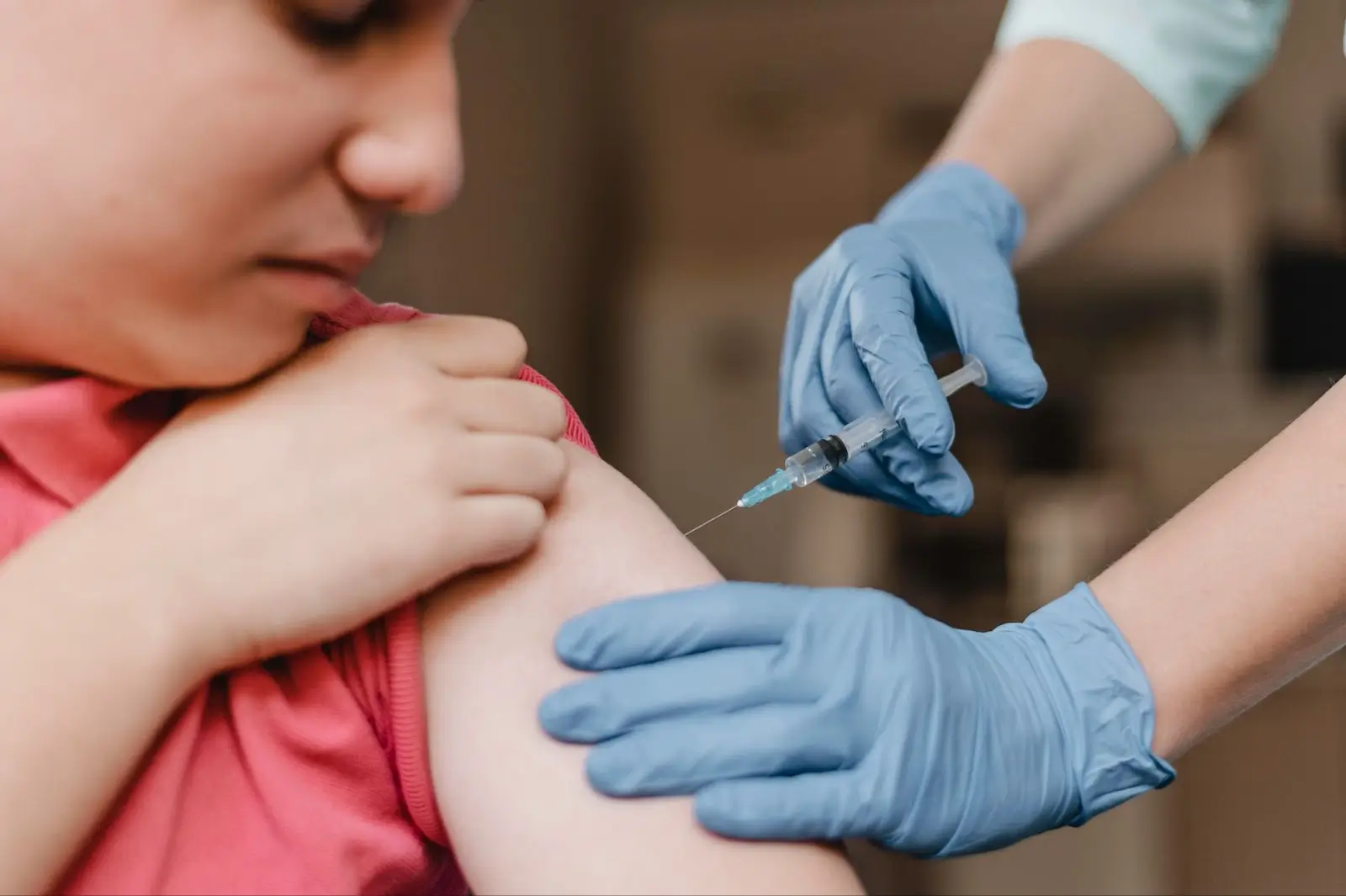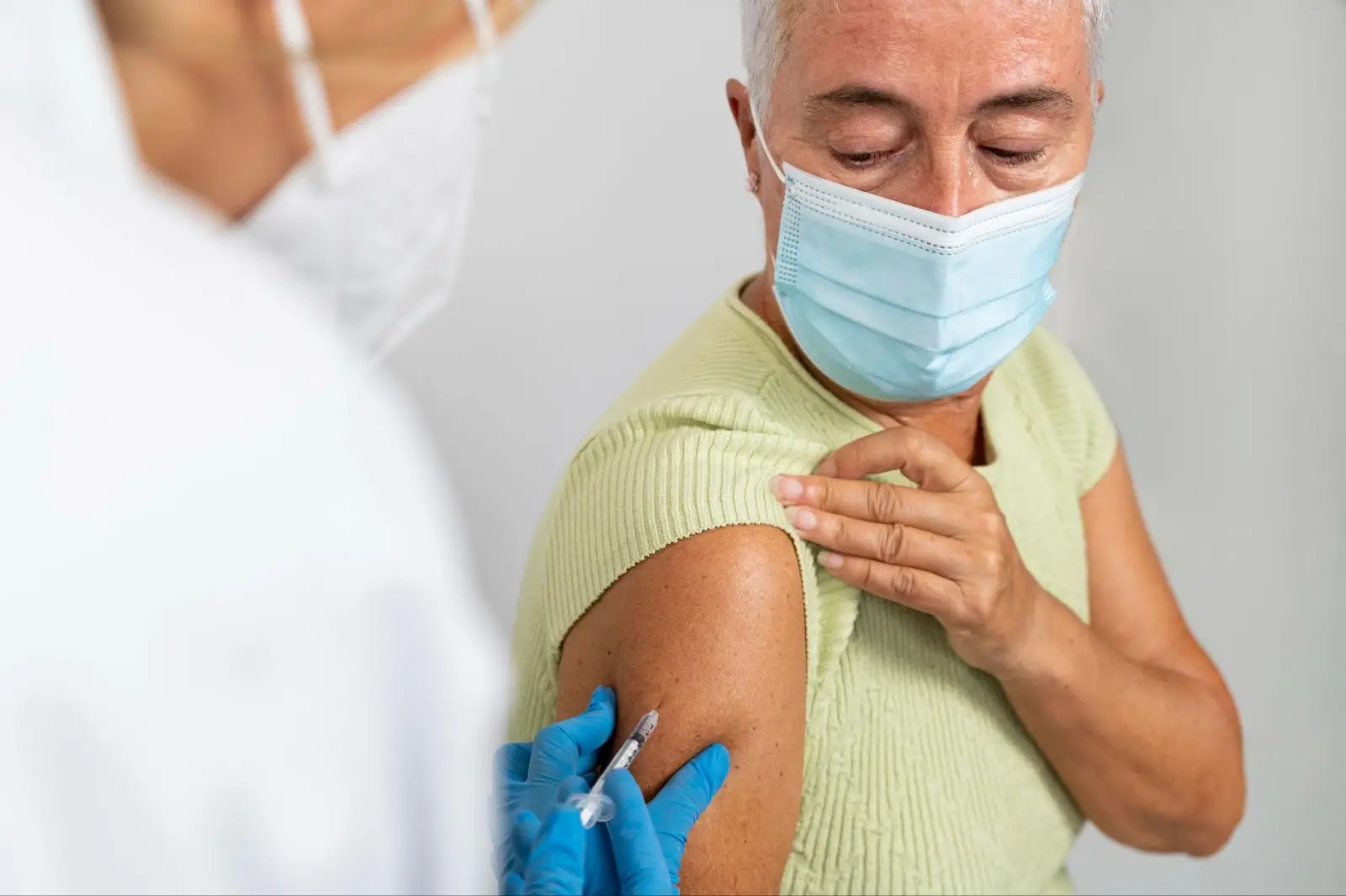Only for Licensed Professionals
Only for Licensed Professionals
.webp)
Gardasil Age Range – Youngest and Oldest Patients
Nina Petrovic
Last Updated On: July 28, 2025
When it comes to vaccines, timing matters. Age-based strategies are designed to make protection as effective as possible. According to the CDC, only about 31% of U.S. children have received at least one HPV vaccine dose by age 11 or 12. However, that number jumps to nearly 57% by ages 15 to 17. These numbers highlight the importance of starting early and underscore the significance of understanding the optimal vaccination age.
Gardasil 9, the latest version of the HPV vaccine, was created to protect against nine different HPV strains, including the ones that cause most cases of cervical cancer and genital warts. It’s approved for use starting at age 9, routinely given around ages 11–12, and can even be offered to adults up to age 45 in certain situations through shared decision-making with a healthcare provider.
In this article, we’ll break down who can get Gardasil, when to start, and why the recommended schedule changes depending on your age, so you can make informed decisions about this vital step in cancer prevention.
Key Takeaways
- Gardasil can be administered as early as age 9, with most routine vaccinations typically starting between ages 11 and 12 for optimal immune response and convenience.
- Two-dose vs. three-dose schedules depend on age at initiation. Starting before age 15 allows for a simpler two-dose regimen, while those 15 and older, or those who are immunocompromised, need three.
- FDA approval now extends up to age 45, offering preventive benefits to adults through shared decision-making, especially those with ongoing HPV exposure risks.
- Vaccination after age 26 is not routine but may be appropriate in certain cases. Conversations with a provider help determine if it’s the right choice.
About: Operating since 2016, Med Supply Solutions is known for being one of the industry’s top and trusted suppliers of cosmetic and viscosupplementation products. If you’re interested in purchasing Gardasil online, please contact our sales department for more information.

Minimum Age for Gardasil: When to Start Vaccination

Knowing when to begin HPV vaccination is essential for long-term protection. The minimum age for Gardasil is 9 years, although routine immunization often begins a bit later. Starting early ensures the immune system responds robustly, especially before any potential exposure to HPV. It also allows for simpler dosing schedules, reducing the number of healthcare visits.
- FDA-Approved Starting Age – 9 Years: Gardasil is officially approved for use starting at age 9. This early option is especially helpful in high-risk settings, such as households with a history of cervical or genital warts.
- Why Early Vaccination Helps: Administering the vaccine before age 15 means only two doses are needed instead of three. The younger the immune system, the stronger the response, making early vaccination both practical and protective.
Initiating the series before adolescence is a key component of public health strategies worldwide. For healthcare providers and parents alike, initiating HPV protection early builds a stronger defense that can last for decades.
Gardasil for Adolescents: Routine Recommendations at Ages 11–12
Adolescence is a critical time for HPV prevention. Gardasil is most effective when administered before any sexual exposure, which is why it’s routinely recommended at ages 11 to 12. This timing also aligns with other wellness checkups, improving vaccine uptake and coverage.
- Routine Starting Age – 11 to 12 Years: Leading agencies, such as the CDC, recommend Gardasil during this age range. It captures most preteens before exposure while maximizing immune response.
- Two-Dose Schedule for Adolescents: Healthy teens under 15 typically require only two doses, spaced 6 to 12 months apart. This schedule enhances adherence while promoting robust antibody development and long-term protection.
Vaccinating at this age has a ripple effect: it prevents multiple HPV-related cancers, simplifies dosing, and ensures broader community immunity through higher participation rates.
Upper Age Limit for Gardasil: Adults Up to Age 45

While Gardasil was originally targeted at younger patients, its approval has expanded. In 2018, the FDA authorized use for adults up to age 45, acknowledging ongoing benefits even for those exposed later in life. This shift broadened the vaccine’s reach and added more flexibility in patient care.
- Expanded Approval – Now Through Age 45: Gardasil’s age cap rose from 26 to 45 after studies showed that many adults still benefit from vaccination. Those with new or multiple partners may still be at risk of acquiring high-risk HPV strains.
- Clinical Decision-Making for Ages 27–45: For adults in this range, vaccination decisions should be based on shared discussions with providers. Not everyone in this group needs the vaccine, but it’s a worthwhile option for those who continue to face a risk.
- Not Used Beyond Age 45: Gardasil is not recommended for people over 45. Clinical data in this age group have not shown consistent protective effects, and immune response declines with age.
Expanding access up to 45 years opens doors for adult prevention. Clear communication and risk assessment help providers decide if Gardasil is right for patients who missed early vaccination opportunities.
Counseling Patients Over 26 on Gardasil Benefits and Limitations
Vaccinating beyond age 26 can still offer protection, especially against high-risk HPV strains not previously encountered. While younger patients benefit most from early immunization, some adults remain at risk due to delayed or minimal sexual activity earlier in life. Gardasil may still provide cancer-preventive benefits in these cases, although immune response and clinical efficacy can be slightly lower than in younger age groups.
Adults over 26 may still benefit from vaccination, especially those who are newly sexually active or in high-risk categories. While the immune response is strongest in younger individuals, Gardasil still provides value in certain adult scenarios.
- Why Some Adults Still Need It: For individuals with limited previous exposure to HPV (such as those with few lifetime partners or delayed sexual activity), catch-up vaccination remains meaningful.
- Shared Decision-Making Matters: Counseling should include questions about sexual history, exposure risk, and vaccine expectations. For these conversations, it’s also helpful to explain what Gardasil is: a preventive vaccine, not a treatment for existing infections.
- Following Gardasil Dose Intervals: Regardless of age, adhere to the correct dosing schedule. The typical timeline consists of two or three doses, depending on age and immune status, and adhering to this schedule is crucial for achieving long-lasting immunity.
Clear education helps patients make informed decisions about their future cancer risk and prevention strategies. While not every adult needs Gardasil, understanding its potential role in protection is empowering.
Conclusion
Understanding the full Gardasil age range—from early childhood to mid-adulthood—helps clinicians and families make the most of this preventive tool. Starting the series early yields the best outcomes, but catch-up vaccination remains valuable for many. With the right guidance, adherence to Gardasil dose intervals, and thoughtful clinical judgment, Gardasil continues to be a cornerstone of global HPV-related cancer prevention.
FAQs
1. Can a child start Gardasil at age 9?
Yes. Gardasil is FDA-approved for individuals aged 9–45, and routine vaccination is recommended at ages 11–12; however, administration may begin as early as age 9 to ensure early protection.
2. What if someone missed vaccination before age 26?
Catch‑up vaccination up to age 26 is recommended. For individuals aged 27–45, vaccination may still be offered after shared decision-making, depending on the risk of HPV exposure.
3. Are adults over 45 eligible for Gardasil?
No. The maximum FDA-approved age for vaccination remains 45. The vaccine is not licensed for individuals older than 45 due to a lack of safety or efficacy data.
4. How important are the Gardasil dose intervals?
Critical. Proper spacing using a (two- or three-dose schedule) ensures an optimal immune response and vaccine effectiveness. Deviating from recommended intervals may require additional doses before the series is complete.
References
Villarroel MA, Galinsky AM, Lu PJ, Pingali C. Human Papillomavirus Vaccination Coverage in Children Ages 9–17 Years: United States, 2022. NCHS Data Brief. 2024;(495):1-8. Published February 2024. https://www.cdc.gov/nchs/products/databriefs/db495.htm
Centers for Disease Control and Prevention. Vaccines by age. Updated June 6, 2025. https://www.cdc.gov/vaccines/by-age/index.html
Products
Cart
Log In
Newsletter
Subscribe for exclusive offers and updates on new arrivals
Share feedback at:
Working Hours
MON - SUN 9AM to 6PM EST
The Most Popular Brands
Med Supply Solutions
Support
Secure checkout is guaranteed with full adherence to PCI DSS payment standards.
Products listed here are guaranteed authentic and manufacturer-sourced.
Pay easily with trusted providers


*Google and Apple Pay are currently only available via a direct link provided by your account manager.
Copyright 2025. Med Supply Solutions